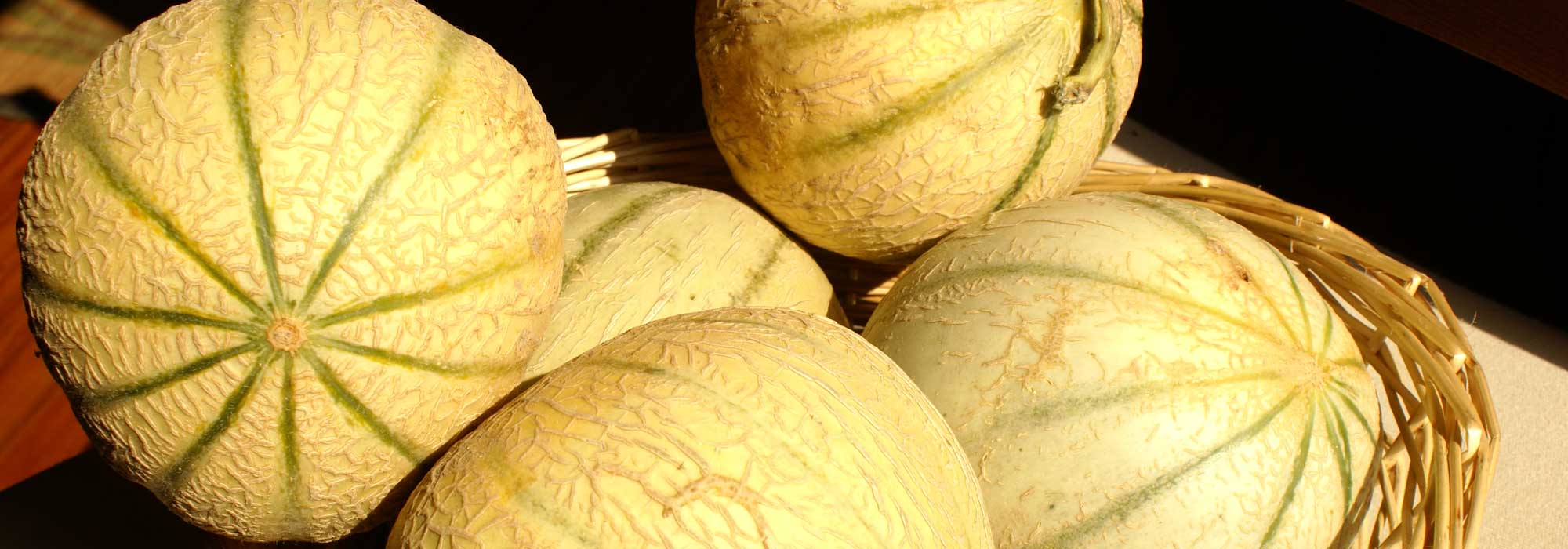
Melon : sowing, planting, growing and pruning
Contents
Melon in a nutshell
- Melon is a demanding young plant; it requires rich, light soil and a warm, sunny position sheltered from the winds.
- Sowing takes place from April, in buckets and under heated cover, with the young plants being installed in the garden after mid-May.
- Maintenance involves regular weeding and hoeing, as well as moderate and regular watering.
- Pruning the melon helps to advance the harvest and produce larger fruits of better taste quality.
- Melon yields a delicious, sweet, and fragrant fruit, refreshing and diuretic, rich in trace elements and vitamins!
The word from our expert
Melon is a plant grown for its sweet and refreshing fruit. Of tropical or subtropical origin, it requires warmth and strong light to produce well-sweetened fruits, thus its cultivation is mainly suited to the warmest regions. Some varieties, with smaller fruits like the Petit gris de Rennes, can succeed in the north of the country. However, to help it ripen in these less favourable regions, it can be grown in a greenhouse, under a tunnel, or on woven fabric. Melon loves soils that are very rich in organic matter.
Melon has been domesticated for a long time by humans, and many species and varieties exist around the world. However, in France, we mainly know the melon ‘Charentais’, highly appreciated for its sugar content, texture, and aroma. Less known and cultivated, sweet melons, which are very high in sugar, such as the variety ‘Ananas d’Amérique à chair rouge’, produce smaller fruits than the Charentais, but are sweet and fragrant. Winter melons like ‘Vert Olive d’Hiver’ have a softer, yet sweet flesh, and have the advantage of being able to be stored for a long time after harvest.
Sowing can begin as early as the end of March until summer, start your sowing under cover at the beginning of the season and then outdoors in buckets from May. As soon as the plants have three true leaves, you can transplant them into the ground. Depending on the varieties, pruning the plants may be necessary to concentrate the plant’s energy on a few melons, thus producing larger and sweeter fruits. Four weeks are needed between the formation of the fruit and the time of harvesting. The advantage of growing melons is that you can let them ripen perfectly on the plant. They thus exude a sweet and pleasant fragrance, a sign that it is time to enjoy them.
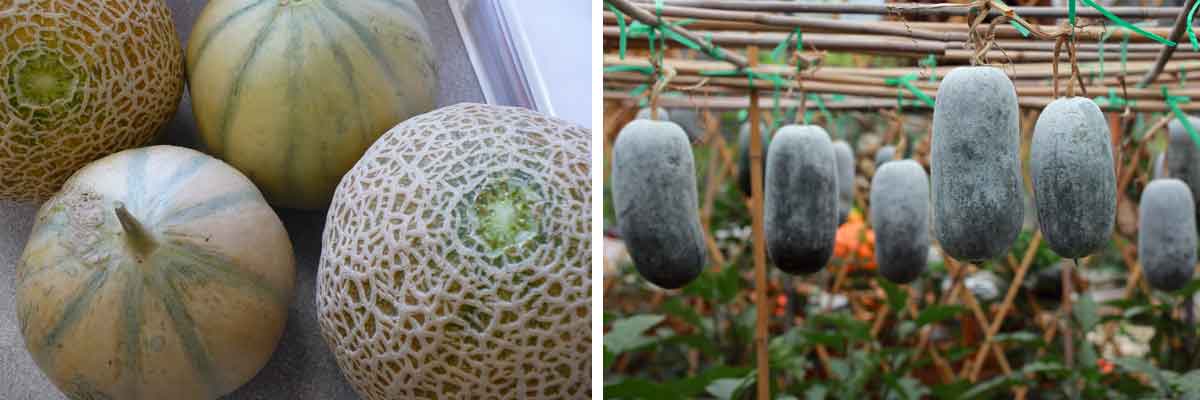
Charentais melons and embroidered melons – winter melons
Description and Botany
Botanical data
- Latin name Cucumis melo
- Family Cucurbitaceae
- Common name Melon
- Flowering Annual
- Height 7 m
- Exposure Sun
- Soil type rich, loose, deep, cool in summer
- Hardiness 0°C
Melon – Cucumis melo – is an annual fruit-vegetable belonging to the large family of Cucurbitaceae, it is of the same genus as cucumber (Cucumis). It is a species native to Africa where wild species grow from the south to the Soudano-Sahelian zone and now extend to India and Australia. Melon was domesticated very early by humans, from 2000 to 2700 years BC in Egypt and Mesopotamia. Seeds dating back to 2000 to 3000 years BC have also been found in China. There are various geographical areas of domestication for this species, which results in a significant diversity of varieties.
In France, it is mainly the Charentais or Cantaloupe melon that is cultivated and consumed. It belongs to the group of “fruit melons”, cultivated for their sweet flesh. Other types of fruit melons are cultivated, including the netted type, the sugar melon type, and winter melons. Other types, virtually unknown in France, are considered “vegetable melons”, they are not sweet and are consumed raw in salads or pickled in vinegar like gherkins. Notable mentions include the tibish group, widely cultivated in Sudan, the snake melon, grown in North Africa and India, and the momordica group cultivated in India.
The common name “melon” comes from the Mediterranean area, deriving from “apple” or “quince”: Malon being the apple in Greek; malum then melum refers to the apple in Latin.
Melon is an annual herbaceous plant with a creeping or climbing habit, it has tendrils for climbing. Its simple, petiolate leaves are rounded, less lobed than cucumber leaves. Its root system is very ramified and superficial. Melon is polymorphous, its fruit, a false berry, can be round or elongated, with a smooth, ribbed, or netted epidermis, its very watery flesh can be green, white, yellow, or orange. It is distinguished from other Cucumis species by its lack of prickles on the fruit. Melon, in its wild state and for some current varieties, is monoecious, meaning it bears both male and female flowers on the same plant. Other varieties are andromonoecious, bearing both hermaphrodite and male flowers. Pollination is entomophilous, occurring through insects, most often bees and bumblebees.
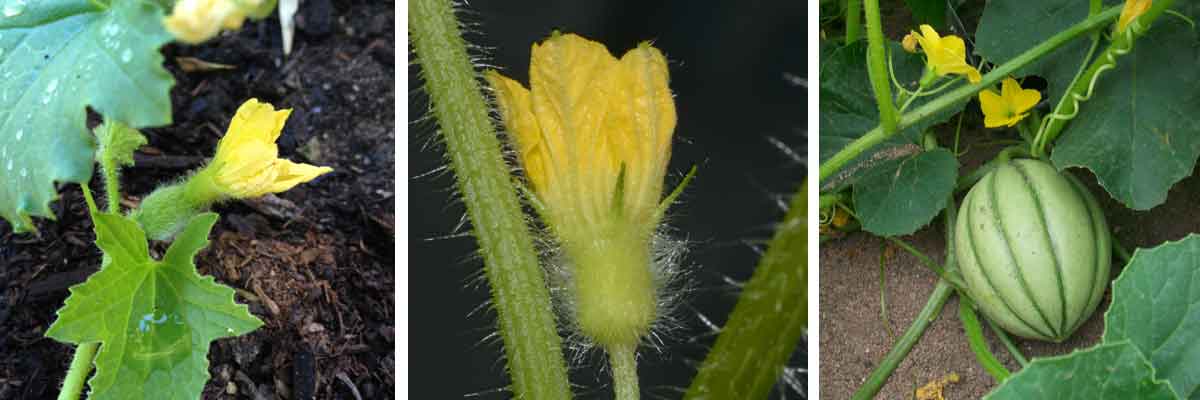
Female melon flower – Male flower – Unripe young fruit
Melon varieties
Melons can be classified into various groups: the Charentais or Cantaloupe type is the most well-known and widely cultivated, particularly due to its sweetness, aroma, and texture. Winter melons have the advantage of being able to be stored for a long time after harvest. The sucrin type has a high sugar content. Discover our selection of varieties:
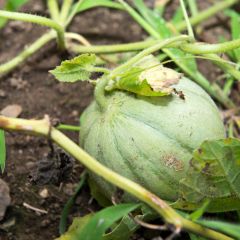
Cucumis melo Charentais
- Flowering time May to July
- Height at maturity 30 cm
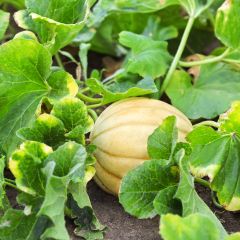
Charentais Melon Troubadour
- Flowering time May to July
- Height at maturity 20 cm
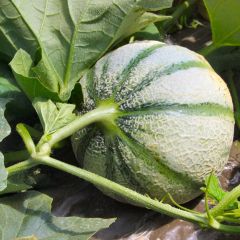
Charentais Melon Diabolo F1 - Vilmorin Seeds
- Flowering time May to July
- Height at maturity 30 cm
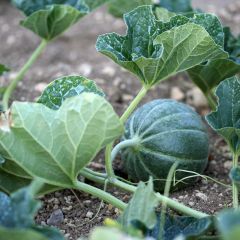
Cucumis melo American Pineapple
- Flowering time June to August
- Height at maturity 20 cm
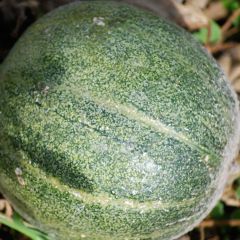
Cucumis melo Petit Gris de Rennes - Ferme de Sainte Marthe Seeds
- Flowering time May to July
- Height at maturity 20 cm
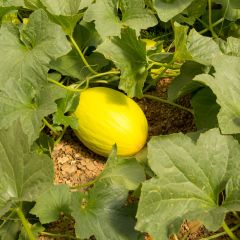
Organic Melon Canary 2 - Cucumis melo
- Flowering time May to July
- Height at maturity 20 cm
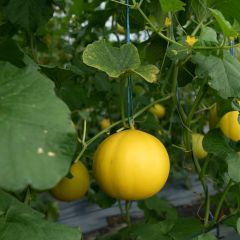
Cucumis melo Golden Ball
- Flowering time June to August
- Height at maturity 20 cm
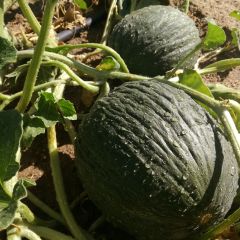
Cucumis melo Winter Olive Green
- Flowering time May to July
- Height at maturity 20 cm
Discover other Melon
View all →Available in 1 sizes
Available in 1 sizes
Available in 2 sizes
Available in 1 sizes
Available in 1 sizes
Available in 2 sizes
Available in 1 sizes
Available in 1 sizes
Available in 2 sizes
Available in 1 sizes
Sowing melons
Where and when to sow melon?
Sowing melon takes place from April until the end of May. In regions with an oceanic influence and in the south, sowing can be done directly in the ground when the risk of frost has passed. However, it is preferable to sow under cover (in a greenhouse, on a hotbed, in a conservatory, or indoors), and your plants can then be transplanted from mid-May into the vegetable garden.
How to sow melons?
Preparing plants in buckets:
Sowing melons to prepare plants is done as follows:
- Prepare buckets by filling them with special sowing compost.
- Sow 2 or 3 melon seeds per bucket at a depth of 1 cm, with the tip facing downwards, to facilitate root development.
- Cover with compost and then water gently from the spout of the watering can or with a spray bottle if you are concerned about displacing the seeds.
- Keep the soil moist but not waterlogged until the seeds germinate, which takes about a week.
- When the plants have three true leaves, thin them out to keep only one plant per bucket.
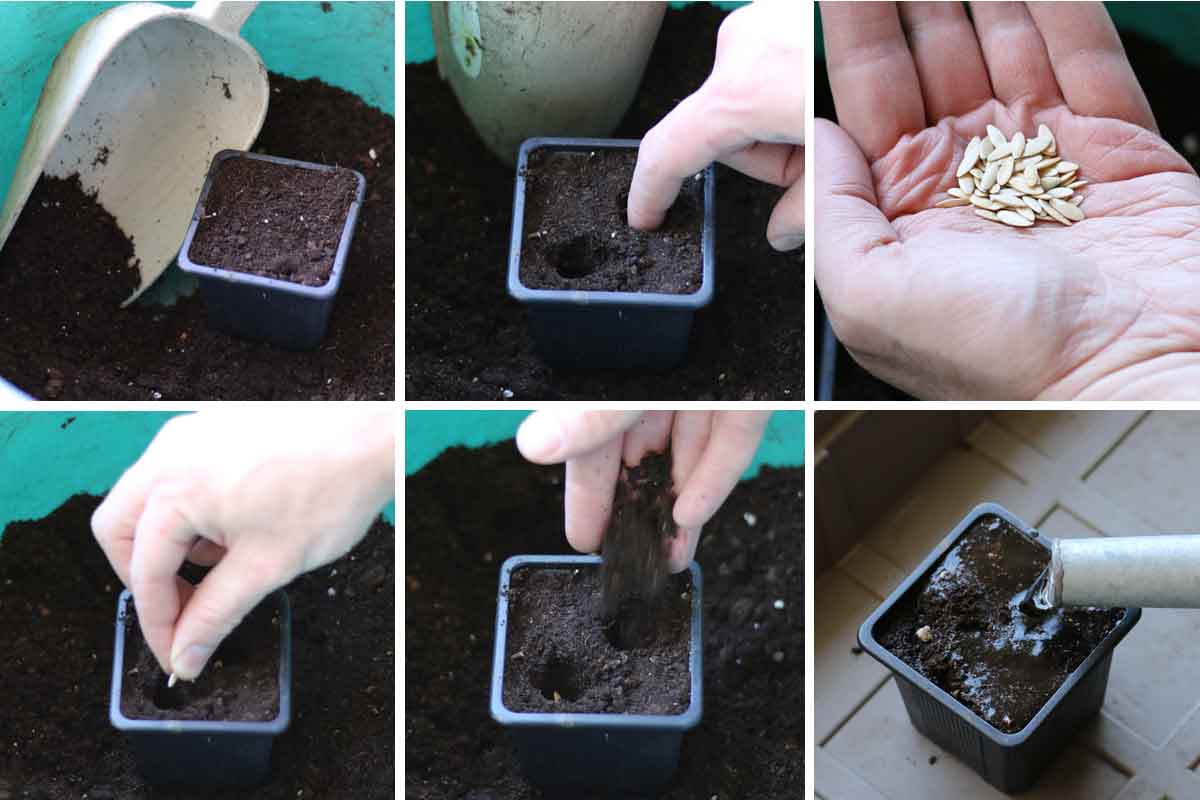 The steps for sowing melon in buckets[/caption>
The steps for sowing melon in buckets[/caption>
Direct sowing in the ground:
- Allow for a spacing of 75 cm within the row and 1.20 m between rows.
- Sow in clusters of two to three seeds, with the tip facing downwards.
- Cover with soil and water moderately.
- When the plants reach three true leaves, keep the strongest plant.
- Use cloches or mini-tunnels if the outdoor temperatures seem too low, and beware of gastropods that love young Cucurbitaceae!
Planting melons
When to plant melons?
Melons are planted from mid-May, after the Ice Saints in the regions most sensitive to cold. Planting can occur earlier in some areas like the South, depending on the year’s weather conditions. The planting period can extend until the end of June.
How to plant melons?
Melons prefer nutrient-rich soil, and they need a lot of heat to fruit well. Therefore, they require a location that is both very sunny and sheltered.
They should be planted 75 cm apart in the row and 1.20 m between rows.
To properly plant your melons:
- If necessary, loosen the soil without turning it over and add well-decomposed organic matter (mature compost).
- Prepare a planting hole the depth of the root ball.
- Place the melon plant and bring the soil back, ensuring the collar is not buried.
- Lightly firm the soil and create a small basin around the plant to concentrate watering at the roots.
- Water well with the spout of the watering can after planting.
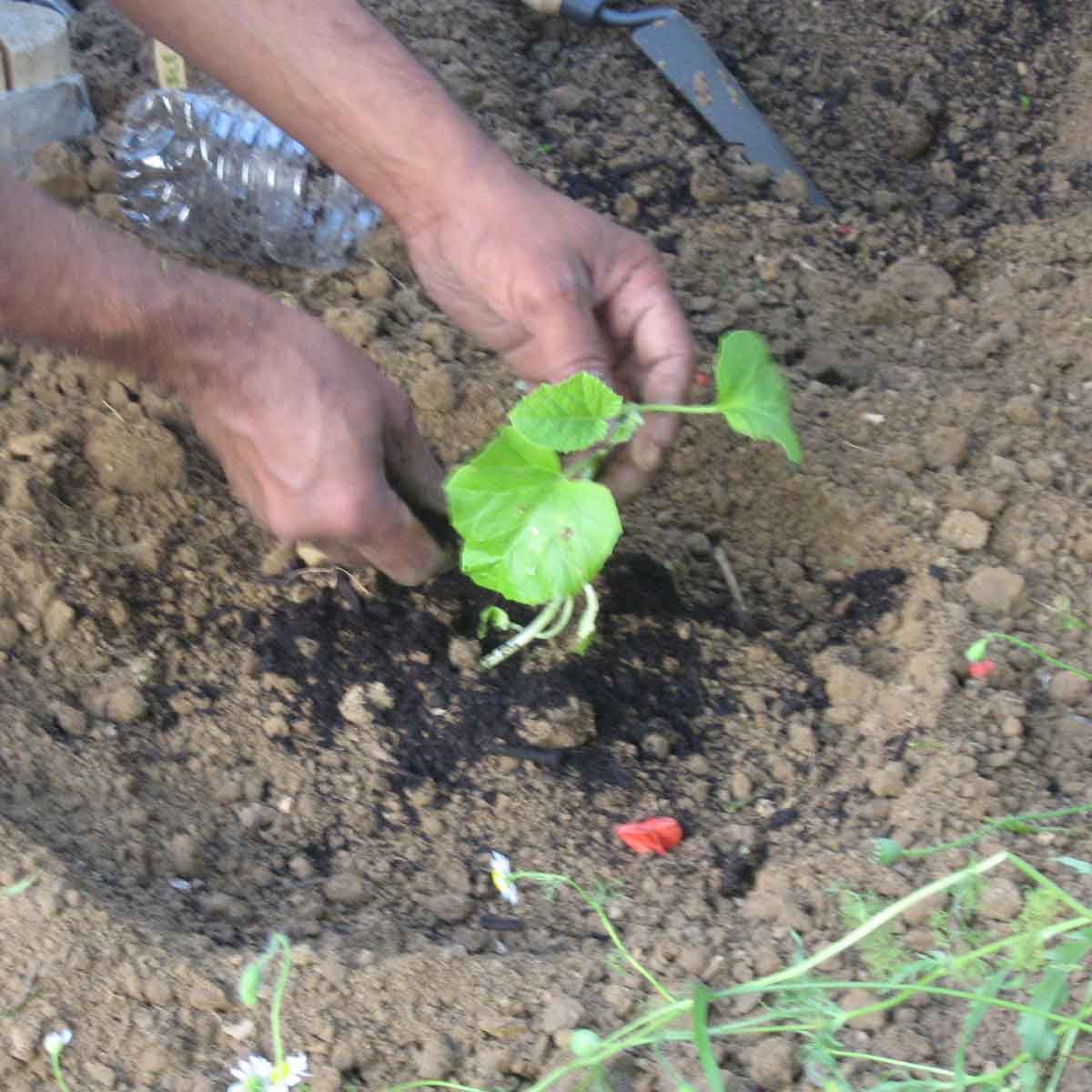
Planting a melon plant
Growing, care, and companion planting for melon
Growing melons requires weeding at the beginning of the growth to eliminate “weeds” and prevent the soil from forming a crust. The young plants will gradually occupy the ground space. It is beneficial to mulch around the base to keep the soil cool and protect the roots from summer heat. This operation is important as they grow superficially. When the fruits appear, place a slate or tile under each fruit to prevent it from coming into direct contact with the soil. This precaution helps avoid rotting due to moisture.
It is essential to water regularly while the fruits are in their growth phase, but you must then stop to allow the sugars to develop.
In companion planting, melons appreciate the company of lettuce and basil, but these are not very practical associations to implement. Avoid growing them near other cucurbits, tomatoes, and peppers.
In cool climates, in northern France, it is wiser to grow melons under glass. If this is not possible for you, here are two techniques that will help you gain a few degrees:
- Grow your melons on a woven tarp: this creates a microclimate favourable for the growth of plants that need warmth. This type of tarp can be reused every year.
- Plant your melons under a Nantes tunnel: this will create a greenhouse effect, generating heat. However, remember to open both sides for ventilation and to allow insects to ensure pollination.
→ Read also the pruning of summer vegetables
Melon pruning
Pruning young plants of melon allows for an earlier harvest while producing larger fruits of better taste quality.
This pruning is minimal at stage 4 for hybrid varieties, but it remains essential for Charentais melons (Cantaloupe) as well as for older varieties, especially in cool climates. Furthermore, pruning melon plants helps to limit their growth and, consequently, the occurrence of powdery mildew, which is common in confined situations.
Pruning melons is carried out in several stages, throughout the growth of the young plant.
To prune your melons:
- Step 1: when the young plant has reached 4 true leaves (not counting the cotyledons), pinch above the first two leaves to encourage branching. This will result in two main branches.
- Step 2: when these two branches have at least three leaves, pinch a second time above the third leaf for each branch.
- Step 3: repeat the operation following the same principle as step 2, on the new branches above the third leaf.
- Step 4: when the first fruits are developing, pinch one leaf above the fruit so that the sap benefits the fruit rather than being used to produce new shoots. It is advisable to keep only 5 to 7 fruits maximum per plant.
Common Melon diseases
Melon Anthracnose
Anthracnose, or red mould, is a fungal disease caused by Colletotrichum orbiculare, which affects Cucurbitaceae in general, particularly cucumbers, gherkins, and melons. The damage can be significant, halting the growth of the plants and potentially leading to their death. The symptoms are very characteristic; on the leaves, brown circular spots surrounded by a lighter, yellowish halo can be observed. On the fruits, greasy spots that turn black like canker appear. Anthracnose is favoured by temperatures between 19 and 24°C during very humid periods.
- Regular attention is necessary, as the spread of the disease can be rapid. If you spot an initial outbreak, cut off the affected leaves and burn them.
- Preventive treatments against powdery mildew (bicarbonate, milk, horsetail) will also help prevent the onset of this disease.
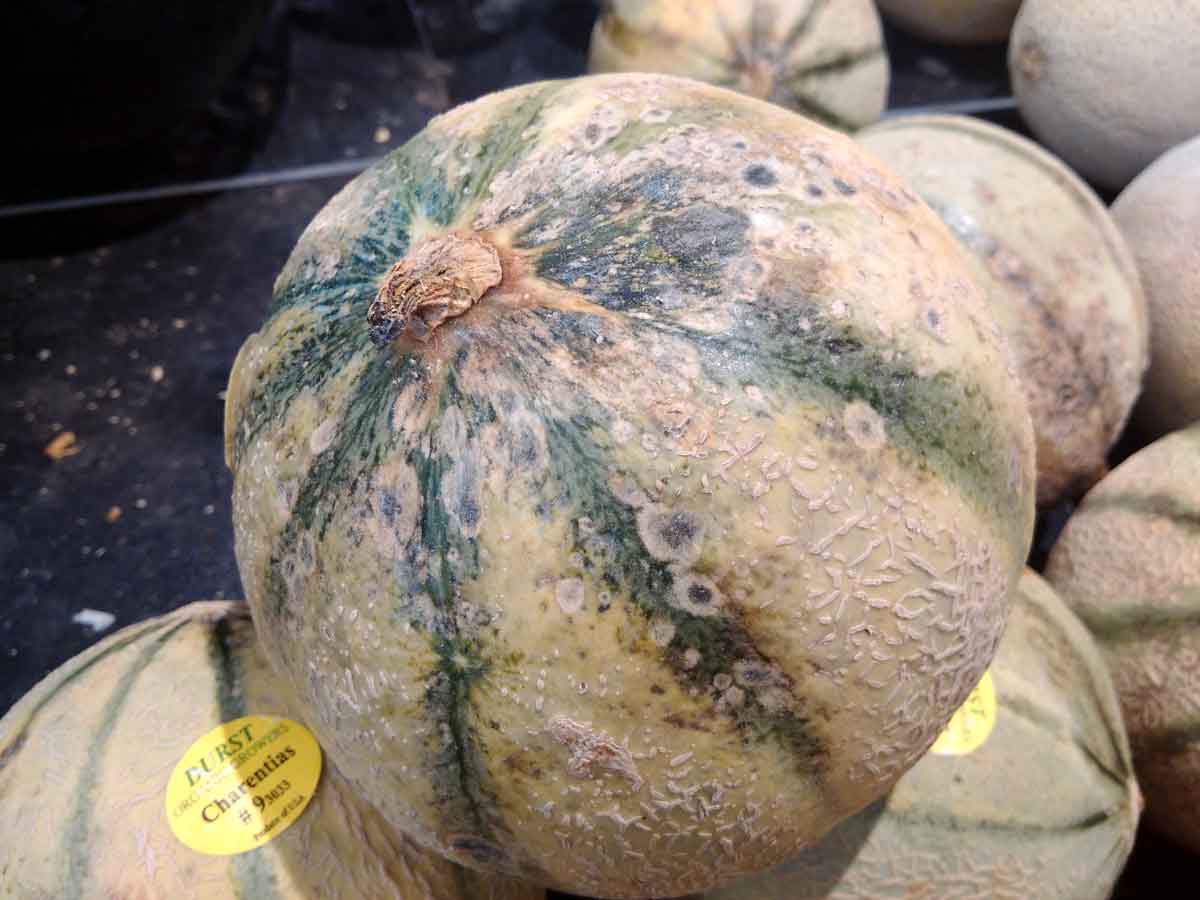
Characteristic spots of anthracnose on fruit
Cucurbitaceae Powdery Mildew
Melon can be susceptible to powdery mildew, a fungal disease that manifests as a white fluff on the foliage. The leaves dry out, production decreases, and in cases of severe attack, powdery mildew can lead to the death of the plants.
- Discover our advice sheet to prevent and treat powdery mildew and our advice sheet on melon diseases and pests
Harvesting and storing melons
When to harvest melons
Melon is ready to be harvested when it emits a pleasantly sweet smell, a small crack appears around the neck, and its colour (for Charentais) turns cream. To the touch, the skin is soft but not mushy (a sign of overripeness). If necessary, cut the neck with pruning shears, but generally, it detaches easily when ripe. Harvesting takes place 4 to 5 months after sowing, from July to September.
How to store them
Cantaloupe-type melons can be stored for a few days in a dry, airy place. If they have been cut, you can refrigerate or freeze them, but they will lose a lot of their flavour. Winter melons have the advantage of being able to be stored for several weeks to a few months after harvest.
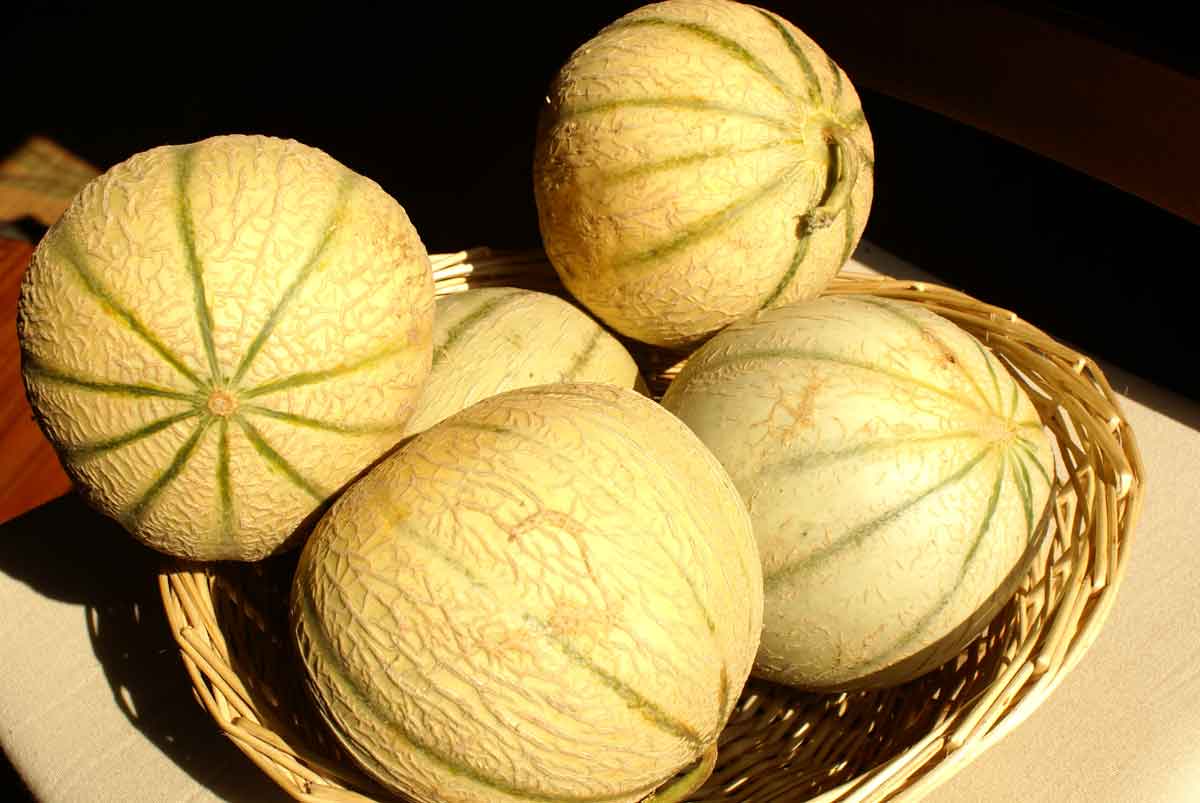
The pleasure of harvesting melons from your garden
Uses and nutritional benefits
Melon is consumed raw as a starter or dessert, but also in sorbets, jams, compotes, or syrup. However, it is often at its best when served simply, that is to say, plain and served at room temperature rather than straight from the fridge! The small melons removed during thinning and various prunings can be prepared as pickles, marinated in vinegar and accompanied by herbs.
Nutritionally, melon is rich in potassium and contains a good amount of other minerals: magnesium, phosphorus, iron, zinc, copper, manganese, calcium. This richness in potassium helps combat water retention. It is also rich in vitamin C and contains vitamin B9. Similarly, its content of beta-carotene, a precursor to vitamin A, has an antioxidant effect, beneficial for vision, the immune system, and the skin. Don’t hesitate to pair it with a bit of fat for optimal absorption of this molecule by your body (long live bread, butter, and melon!). Finally, beta-carotene combined with vitamin C makes melon a good heart protector.
Useful resources
Discover our range of melons, with numerous varieties available as seeds or young plants.
Our advice sheet: melon diseases and pests
Our advice sheet: How to choose a melon?
Gwenaëlle tells you the story of melons in: Where do our fruit trees come from?
Frequently asked questions
-
Why do melons burst?
Fruits, rich in juice, can split and burst as they approach ripeness and due to excess water from overwatering or excessive rainfall.
It is quite difficult to prevent this issue. To avoid it, I recommend carefully controlling watering (growing under glass), choosing varieties resistant to bursting, and growing them on slightly raised beds to prevent excess water.
-
How to grow larger melons?
Each young melon will produce several fruits. When too many fruits are borne by a single young plant, some melons may remain small. This is why it is important to practise pruning on melons as we have detailed above. For optimal development, we recommend keeping a maximum of 5 to 7 fruits per plant.
-
- Subscribe!
- Contents
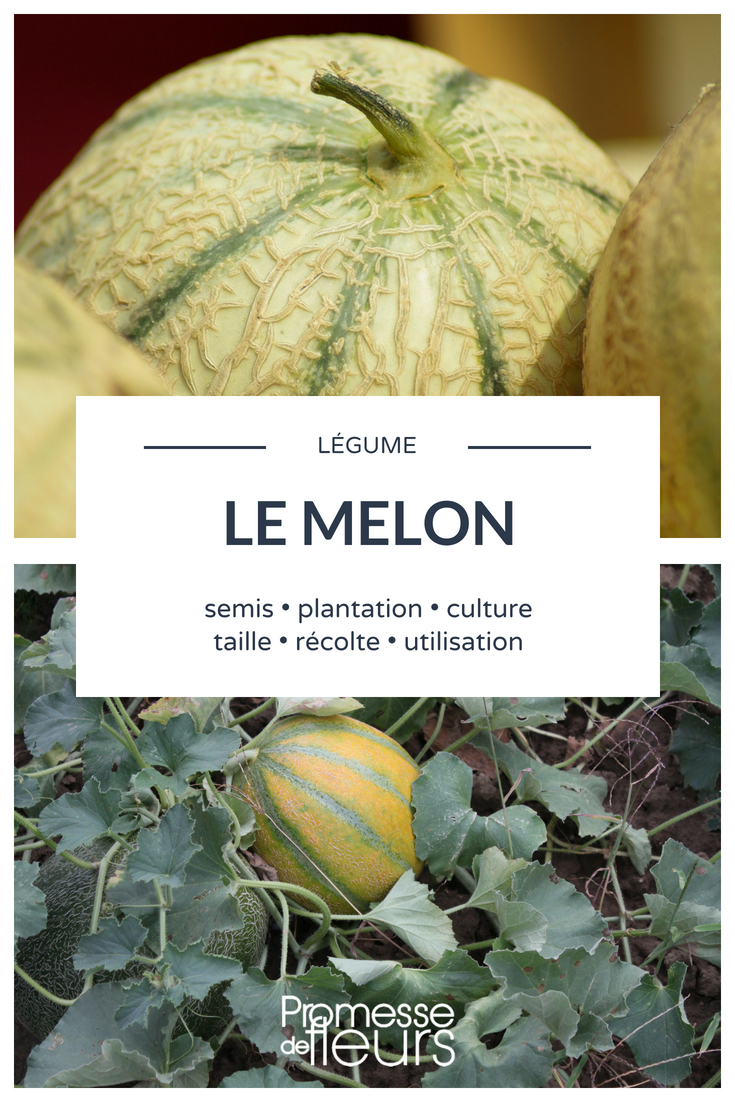































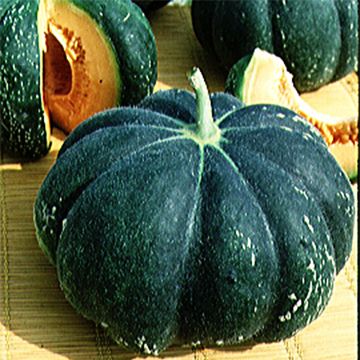

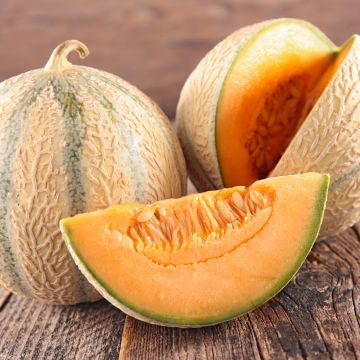
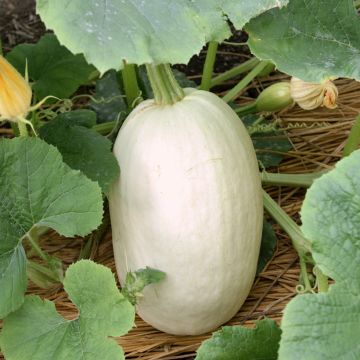
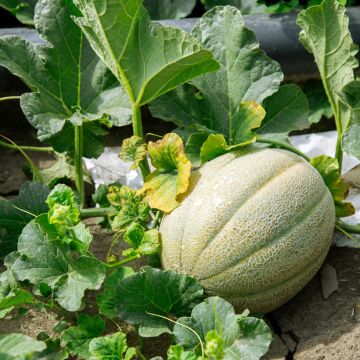
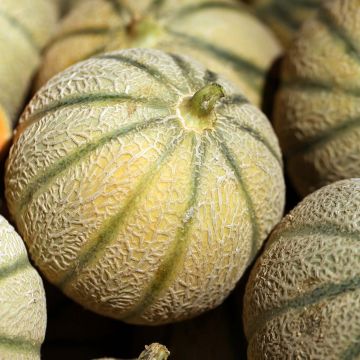

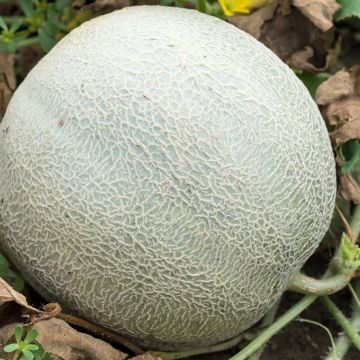
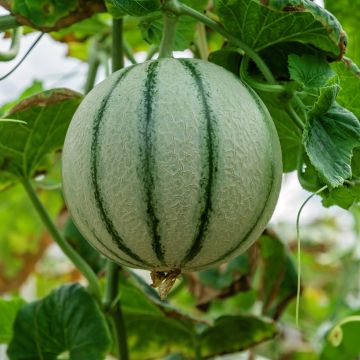
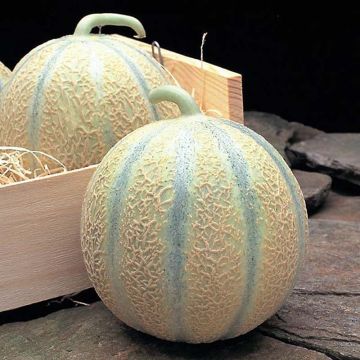
Comments